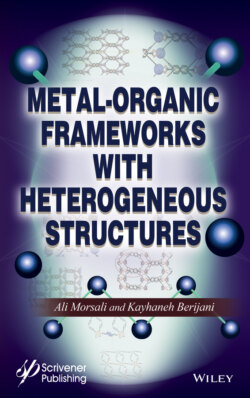Читать книгу Metal-Organic Frameworks with Heterogeneous Structures - Группа авторов - Страница 16
1
Introduction: A Brief Introduction About Metal-Organic Frameworks
ОглавлениеAbstract
Metal-organic frameworks (MOFs) or porous coordination polymers (PCPs) are a subset of hybrid porous materials that have recently attracted considerable attention. Their structures are constructed from inorganic (such as metal clusters or atoms, rod-shaped clusters) and organic (such as carboxylates, azoles, nitriles) parts with different chemical nature. The features of both parts (node and linker) can determine MOF properties like network structure (net) topology, physical, mechanical and morphological features. MOFs with tunable pore size, different functionalization, high surface area and stability can be synthesized through the various synthesis methods. Depending on application of MOFs, design and their synthetic methods can be changed that are very important. Indeed, the rise of MOFs chemistry can be primarily related to their properties and performances. In this chapter, we present a brief introduction about MOFs such as types of metal nodes, organic linkers and synthesis strategies. So, based on the used components in MOFs, diverse frameworks can be designed and generated. As a result, tunability in their structure makes them attractive and important candidates for diverse purposes.
Keywords: Metal-organic framework, inorganic building units, organic linkers, structural tunability, porous materials
